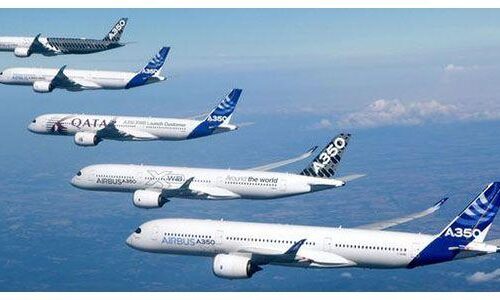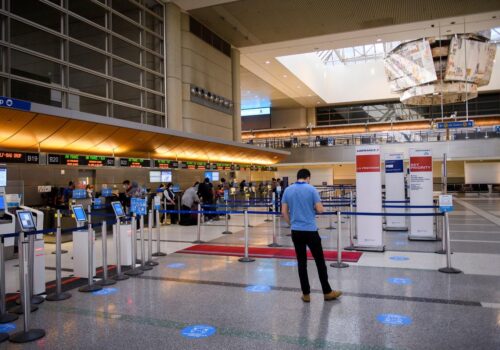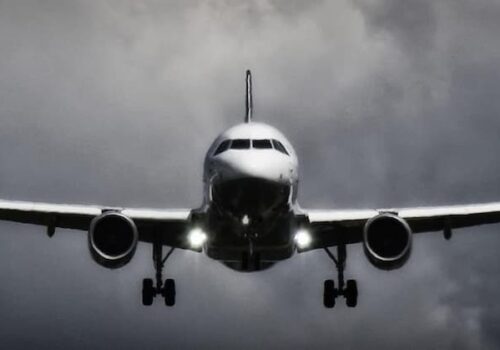Yakovlev Yak-40, The Shortest Commercial Plane
When it comes to planes, size definitely matters. You have giant planes like the Airbus A380, which can seat over 800 passengers. There are B2 Spirit Stealth Bombers that cost over $2 billion each and have wing spans of 172 feet.
But what about the other end of the spectrum? What would be the smallest commercial plane out there? How many passengers can it board?
That would be the Yakovlev Yak-40, which is just 33 feet long and can only seat 30 passengers. So what’s the story behind this tiny plane?
The Origins of Yakovlev Yak-40
Aleksandr Sergeyevich Yakovlev was one of the earliest Soviet aircraft designers. During the 1920s, he was responsible for designing several different planes, including the AIR-1, a two-seat light biplane.
His early designs paved the way for him to create the Yak-1 fighter plane, which was used extensively in World War II. After the war, Yakovlev decided to focus on creating passenger planes, and the Yak-40 was born.
Once the war was over, the global aviation industry entered the jet age. That’s when the Yak-40 made its debut. The plane entered service with Aeroflot, the Soviet Union’s national airline, in 1966.
During the 1960s, Yakovlev already had decades of experience in managing plane design programs. That’s why Aeroflot trusted him to design an airplane that could fly easily in and out of small, poorly equipped airports.

The Idea Behind Yakovlev Yak-40
In the Soviet Union, many runways were disrepair and lacked the necessary infrastructure to support larger planes. The Yak-40 was designed as a “local” plane that could take off and land on shorter runways.
The Yak-40 was also designed to fly at lower altitudes, which made it more fuel-efficient. That was a significant advantage at a time when fuel was expensive and in short supply.
During the late 1960s, the plane entered the passenger market and found success as a regional airliner. It was used extensively by Aeroflot and other Soviet-era airlines.
The plane quickly gained a reputation for being reliable and easy to operate. However, there were some drawbacks. The Yak-40 was not pressurized, so passengers had to endure lower oxygen levels and colder temperatures at higher altitudes. The plane was also quite loud due to its three Kuznetsov NK-8 engines.
The Aeroflot Flight 19 Incident
A noticeable incident during the early years of Yak-40 was the hijacking, which happened in November 1973, on the route between Bykovo and Bryansk airports.
A few minutes before landing, four armed people headed over to the cockpit and took control. The plane was then redirected to Vnukovo Airport, where the plane landed.
During the hijacking, the authorities stormed the plane. The police officers managed to save all of the hostages. Two hijackers were killed during the operation, and the rest were arrested and prosecuted.
Yakovlev Yak-40 Rise in Popularity
In the mid-1970s, a new edition of the Yak-40 was introduced. It had a greater range, a new forward door, and a modern setup of windows. More than 20 new variants were proposed or designed in the following years.
The Yak-40 quickly became popular with Aeroflot and other airlines in the Soviet Union. By the 1980s, over 1,000 Yak-40s were in service. The plane was even exported to countries like Bulgaria, Czechoslovakia, and East Germany.
It’s also important to note that the plane was sold in these countries for hard currency, which was a valuable commodity in the Soviet Union. In the early 1990s, after the fall of the USSR, Aeroflot began to replace its Yak-40 fleet with newer planes.
The success of Yak-40 led to the design of Yak-42, which is a larger, more modern plane. It was the first airliner made by the Soviets that was backed by modern bypass turbofan engines.
The Legacy of Yakovlev Yak-40
After everything is said and done, the Yak-40 has left a huge mark on the aircraft industry. It’s still a popular plane in the former Soviet Union and other parts of the world. And it’s all thanks to its small size and big impact.
You can see it in operation with the likes of Motor Sich, Vologoda Aviation, and Severstal Air Company.
Aeroflot nowadays doesn’t use any Yak-40 in their current fleet. Instead, the company uses Superjet 100, a product of the Sukhoi Civil Aircraft Company.
Although Aeroflot no longer uses it, the Yak-40 remains an important part of the company’s history. It was a reliable workhorse that served the airline well for many years. And it’s a plane that will always be remembered fondly by those who had the chance to fly on it.




